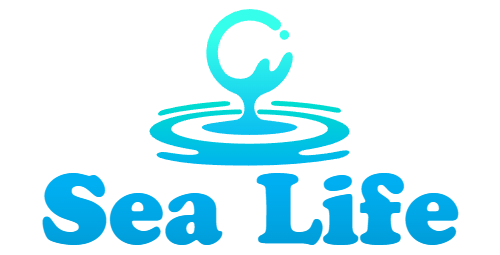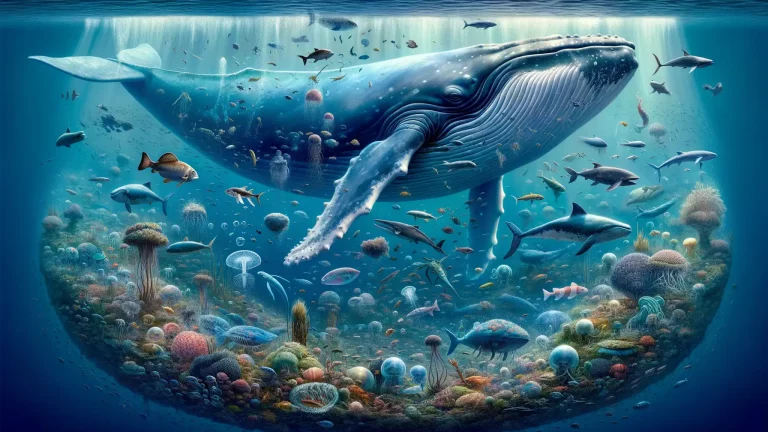Introduction to the Importance of Whales in Marine Ecosystems
Picture the vast, blue expanse of the ocean—a realm teeming with life, mystery, and connection. At its heart, silently orchestrating its balance, are the majestic whales. These awe-inspiring creatures aren’t just the giants of the sea; they are architects of their ecosystem, playing roles as vital as the roots of an ancient forest.
Whales as Nature’s Ocean Engineers
Whales are much more than charismatic marine mammals. When a whale feeds and dives, it stirs up nutrients from the depths to the surface in a mesmerizing dance known as the “whale pump.” It’s as if they’re the ocean’s gardeners, fertilizing the water for tiny phytoplankton—lifeforms that create over 50% of Earth’s oxygen and form the foundation of marine food webs. Imagine that: every second breath you take may owe its thanks to these gentle titans.
The Ripple Effect of Whale Activity
- Feeding habits: Whales distribute nutrients, supporting everything from krill to colossal schools of fish.
- Carcasses: Even in death, whales nourish deep-sea ecosystems as their bodies sustain countless scavengers.
Think of them as the unsung heroes of the sea, quietly knitting together the threads of life underwater—not with tools but through their mere existence.
How Whales Support Ocean Biodiversity
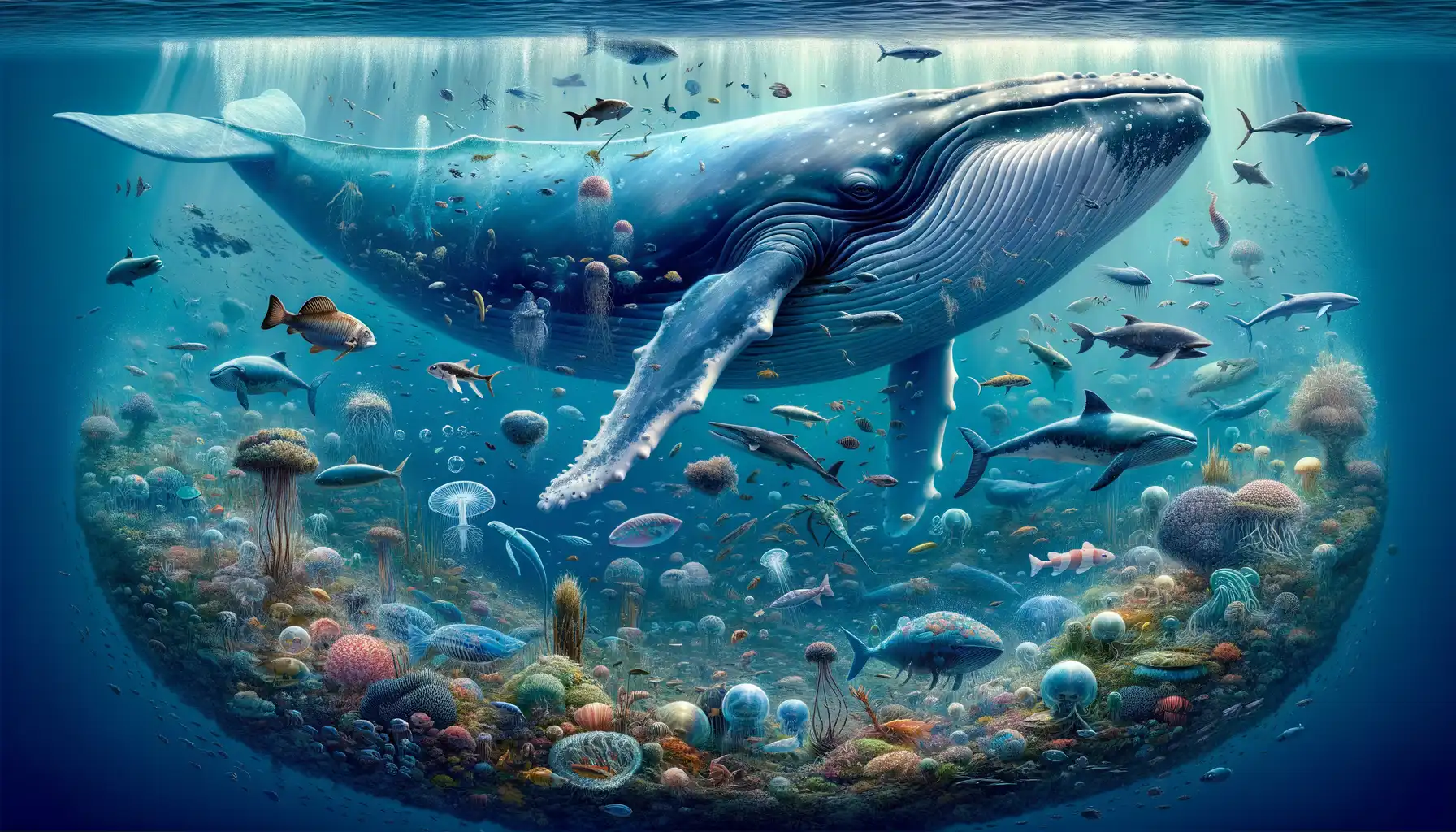
Whale Poop: Nature’s Glitter for the Ocean
Picture this: majestic whales diving deep, then surfacing with a splash. But what really makes waves below the surface? Their poop. Yes, you read that right—whale poop is like sprinkling magic dust into the ocean. It’s rich in essential nutrients like nitrogen and iron, which act as fertilizer for microscopic marine plants called phytoplankton. These tiny plants aren’t just lunch for small fish; they’re the foundation of the entire ocean food web.
And here’s where it gets fascinating: more phytoplankton means thriving populations of fish, krill, and other sea creatures. When whales feed and migrate, they spread these nutrients far and wide, creating underwater oases. It’s almost like they’re planting gardens in the sea, one tail flip at a time.
The Ripple Effect of Whale Movements
Whales also play the role of ecosystem engineers by stirring the waters. Their colossal tails churn up nutrients from the depths, making them available to life near the surface. Along their migration paths, they provide dining opportunities for predators and scavengers alike:
- Orcas follow pods of sperm whales for hunting cues.
- Sharks and seabirds gather for leftovers after a whale feast.
Without whales, many marine species would struggle to find food. They’re not just ocean giants; they’re caretakers of a delicate balance.
The Impact of Whale Activities on Carbon Sequestration
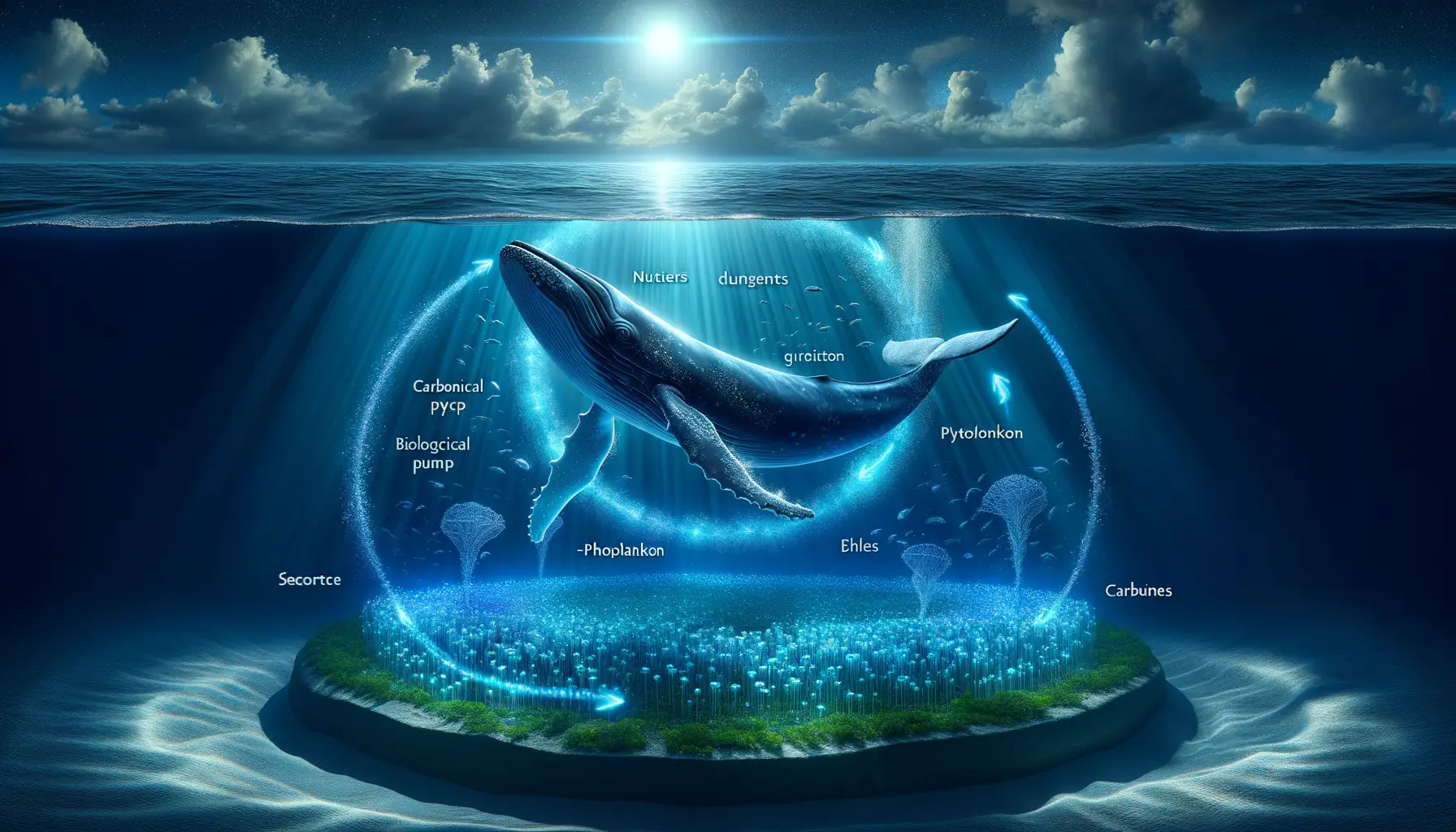
Whale Pump: The Secret to Carbon Storage
Picture this: a pod of majestic whales diving and surfacing through the ocean, not just for survival, but unknowingly playing a pivotal role in fighting climate change. How? Through something scientists call the “whale pump.” Whales feed in the depths, then surface to release nutrient-rich waste—yes, even poop has a purpose! This action fertilizes phytoplankton, those tiny, photosynthetic powerhouses responsible for absorbing an estimated 30-40% of human-produced CO₂.
Phytoplankton flourish thanks to these nutrients, creating vast underwater “carbon sinks.” When they die, they sink to the ocean floor, effectively locking away tons of carbon for centuries. Without whales, this natural cycle would falter.
- Each great whale supports the removal of dozens of tons of CO₂ over its lifetime.
- A thriving whale population could boost phytoplankton productivity by as much as 1% globally—a game-changer for our warming planet.
The Ocean’s Giants and the “Carbon Highway”
But wait, there’s more! Whales also contribute posthumously. When they die, their enormous bodies sink to the seafloor, forming what scientists call “whale falls.” These carcasses create entire ecosystems while simultaneously trapping significant amounts of carbon in the deep, where it remains safely locked away. Think of it as nature’s way of recycling on a massive, oceanic scale.
It’s astonishing to realize that every breach, dive, and even death of a whale contributes to stabilizing our planet. They’re not just ocean dwellers; they’re silent warriors in the fight against climate change.
Threats to Whale Populations and Ecosystem Implications
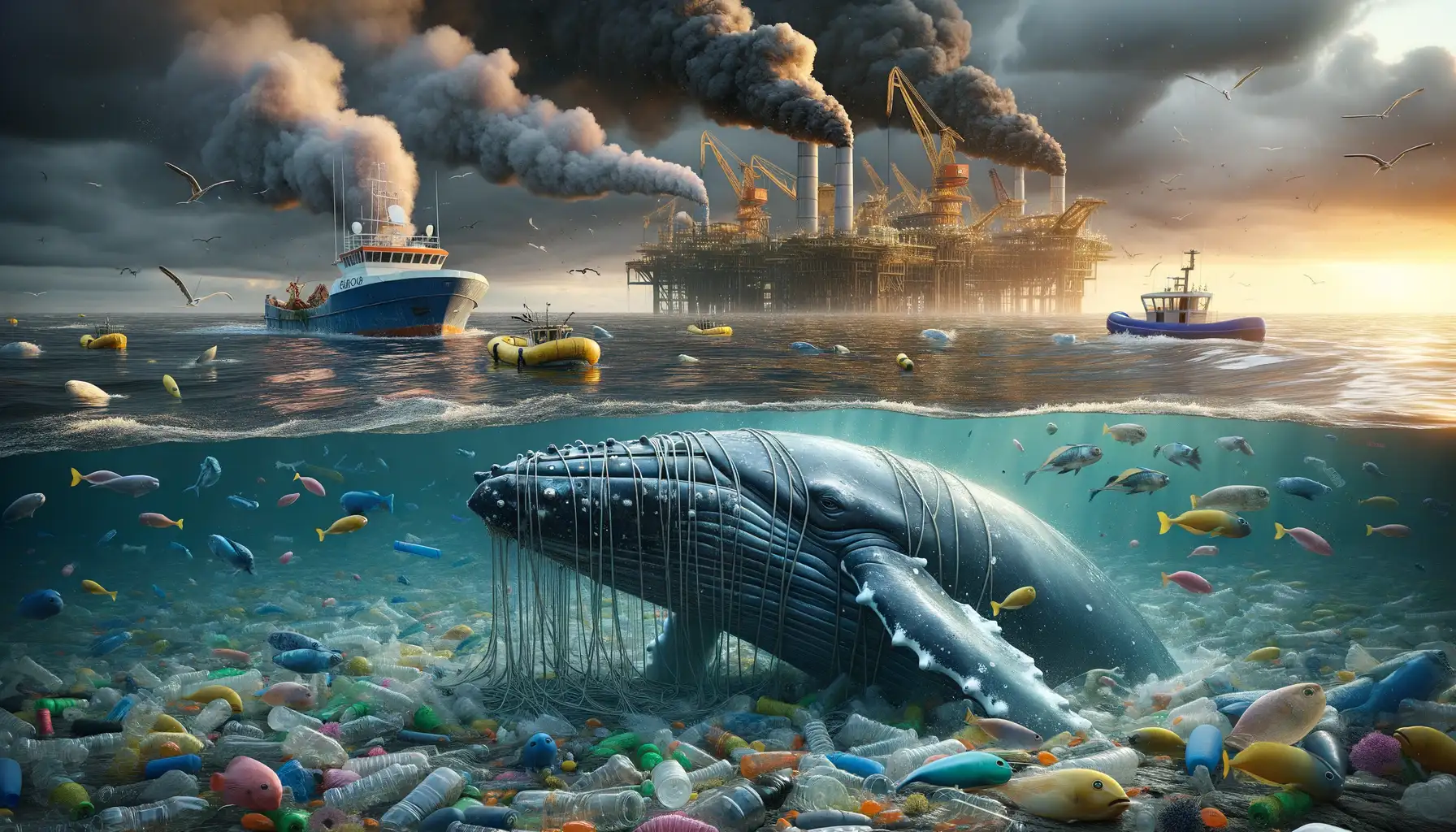
Mounting Pressures in the Open Seas
Imagine the seemingly infinite ocean—a vast, blue sanctuary for majestic creatures like whales. But underneath this shimmering surface, whale populations are under siege. Their lives are marked by challenges that aren’t just heartbreaking; they ripple across the entire marine ecosystem.
Let’s talk about climate change. Rising sea temperatures alter feeding grounds and migrations, throwing whales’ routines off balance. And then there’s the haunting melody of ocean noise. Human activity—from relentless ship traffic to underwater drilling—creates a cacophony that drowns out whale songs, their primary mode of communication.
On top of that, our plastic addiction is no small villain. Plastic waste drifts through their habitats, sometimes mistaken as food. A drifting bag, a colorful straw—harmless to you but often lethal to them.
When Whales Struggle, Oceans Suffer
Here’s the stark truth: when whales struggle, the ocean pays a steep price. A single dead whale doesn’t just mean loss of life; it disrupts a complex chain of events. Whales help regulate fish populations, carry nutrients, even enhance carbon storage. Without them, the balance teeters.
Conservation Efforts and Their Significance for Marine Health
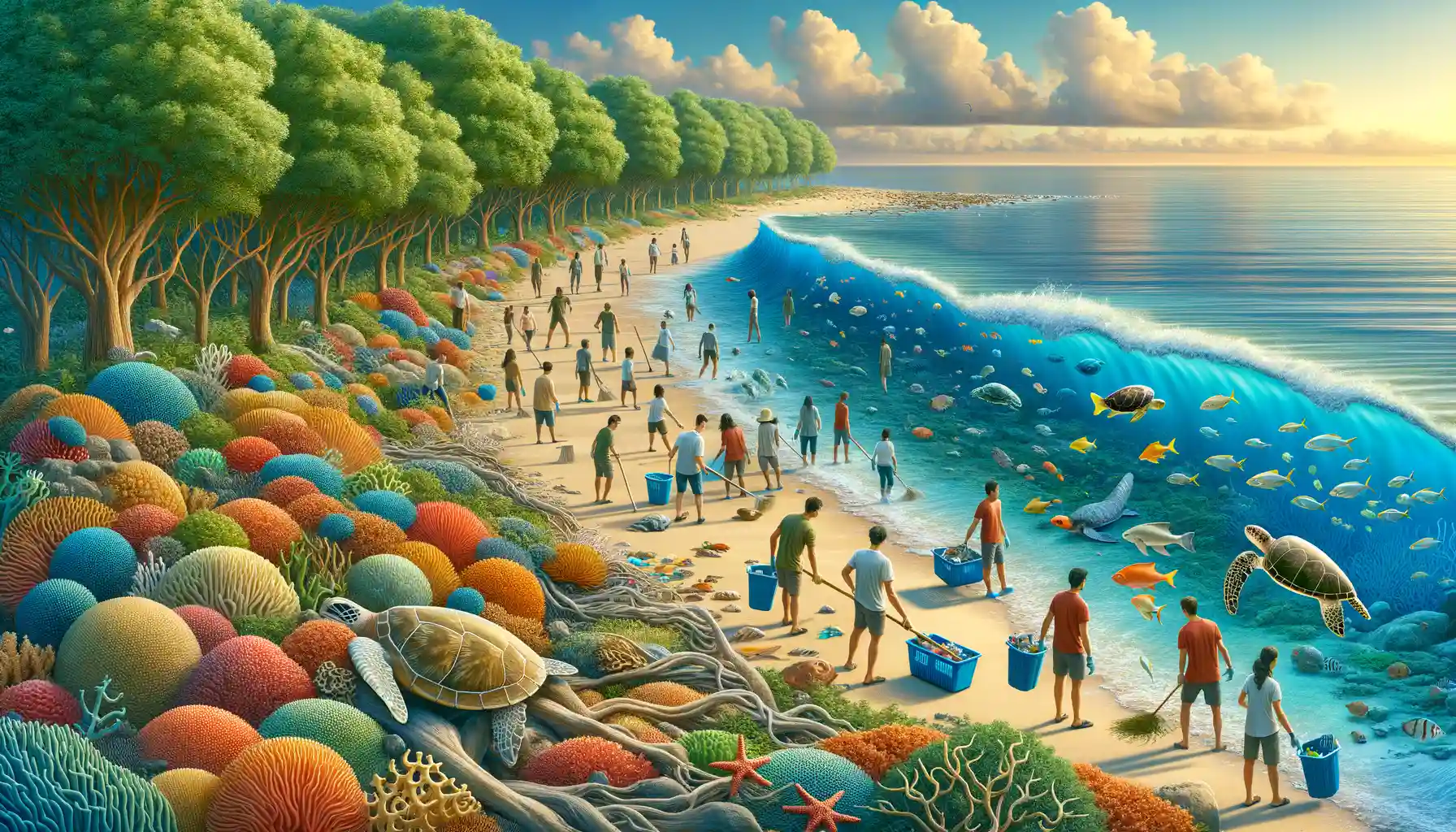
Protecting Giants, Preserving Oceans
When we talk about conservation, we aren’t just saving a single species—we’re safeguarding the pulse of our oceans. Whales are not just breathtakingly majestic creatures; they are the unsung engineers of marine ecosystems. Protecting them isn’t an act of charity—it’s a lifeline for the entire ocean.
Conservation efforts come in many shapes and sizes. From banning commercial whaling to expanding marine protected areas, every step counts. Here’s why it matters:
- Whale populations regulate biodiversity: Healthy whale numbers mean healthier fish stocks and better-balanced ecosystems.
- Oceanic carbon warriors: Each whale helps trap tonnes of carbon dioxide, fighting climate change in their slow but steady way.
But why should this matter to you? Imagine a world where shark migration paths collapse or coral reefs crumble because one keystone species—the whale—disappears. Without them, the dominoes begin to fall.
Grassroots Heroes and Global Allies
On the frontlines of change are local communities, oceanographers, and grassroots organizers. Their tools? Everything from satellite technology tracking whale migrations to fishermen lobbying for bycatch-safe nets. Then there’s you. Yes, you! Every sustainable choice you make—less plastic, smarter seafood choices—ripples into a brighter future for the sea.
Because when whales thrive, so does life beneath the waves. And isn’t that worth fighting for?
